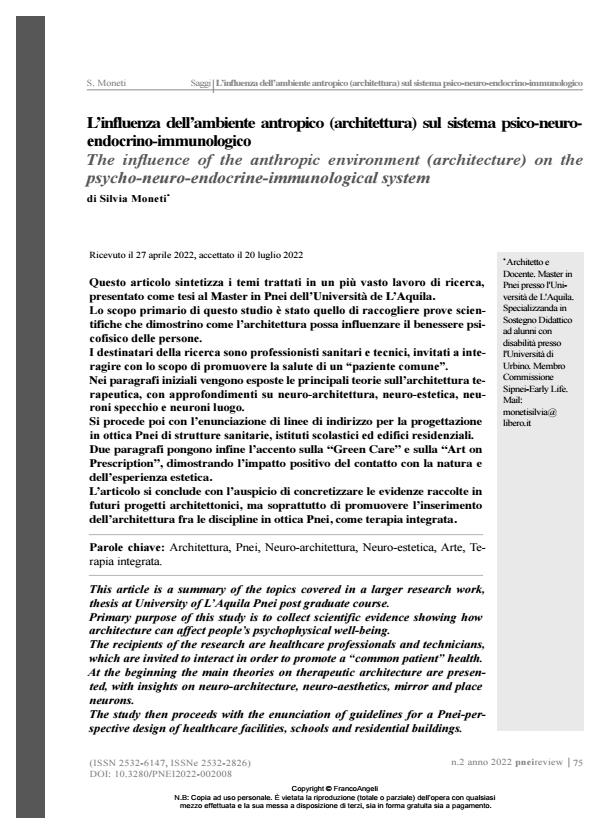The infl uence of the anthropic environment (architecture) on the psycho-neuro-endocrine-immunological system
Journal title PNEI REVIEW
Author/s Silvia Moneti
Publishing Year 2022 Issue 2022/2
Language Italian Pages 17 P. 75-91 File size 135 KB
DOI 10.3280/PNEI2022-002008
DOI is like a bar code for intellectual property: to have more infomation
click here
Below, you can see the article first page
If you want to buy this article in PDF format, you can do it, following the instructions to buy download credits

FrancoAngeli is member of Publishers International Linking Association, Inc (PILA), a not-for-profit association which run the CrossRef service enabling links to and from online scholarly content.
This article is a summary of the topics covered in a larger research work, thesis at University of L’Aquila Pnei post graduate course. Primary purpose of this study is to collect scientific evidence showing how architecture can affect people’s psychophysical well-being. The recipients of the research are healthcare professionals and technicians, which are invited to interact in order to promote a "common patient"health. At the beginning the main theories on therapeutic architecture are presen- ted, with insights on neuro-architecture, neuro-aesthetics, mirror and place neurons. The study then proceeds with the enunciation of guidelines for a Pnei-per- spective design of healthcare facilities, schools and residential buildings. The next part highlights the "Green Care" and "Art on Prescription", proving the positive impact of getting in touch with nature and aesthetic experience. The research ends with the hope of implementing those evidence gathered in future architectural projects, but above all to promote the inclusion of archi- tecture among Pnei-perspective disciplines, as integrated therapy.
Keywords: Architecture, Pnei, Neuro-architecture, Neuro-aesthetics, Art, Integrated Therapy.
Silvia Moneti, L’influenza dell’ambiente antropico (architettura) sul sistema psico-neuroendocrino-immunologico in "PNEI REVIEW" 2/2022, pp 75-91, DOI: 10.3280/PNEI2022-002008